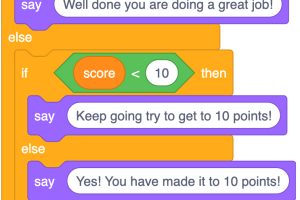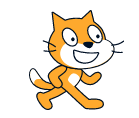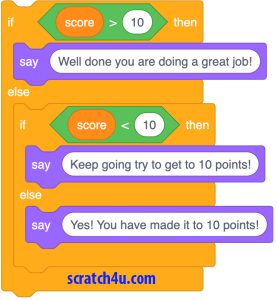Getting Started with Scratch Syntax

Getting Started with Scratch Syntax
Unleash Your Creativity with Scratch Syntax ===
Scratch is a fantastic programming language designed to make coding accessible and fun for everyone, from beginners to experienced programmers. With its colorful blocks and drag-and-drop interface, users can create interactive stories, animations, games, and more. But before you can embark on your coding adventures, it’s essential to understand the basic syntax of Scratch. In this article, we will explore some fundamental concepts that will help you get started and dive into the wonderful world of Scratch syntax.
Getting Started with Scratch Syntax
When you first open Scratch, you’ll notice a collection of colorful blocks on the left side of the screen. Each block represents a different command or function. To create a program, simply drag and snap these blocks together in the Scripts area. The blocks fit like puzzle pieces, making it easy to assemble your code.
To start, you will need an “event” block that triggers your code. For example, you can use the “when green flag clicked” block to make your program start when the green flag is clicked. Then, you can add blocks such as “move 10 steps” or “say Hello!” to make your sprites move or speak. Scratch syntax is intuitive and self-explanatory, so you’ll quickly get the hang of it!
Unleash Your Creativity with Scratch Syntax
With Scratch, you have endless possibilities to unleash your creativity. The syntax allows you to control the behavior of sprites, add sound effects, incorporate animations, and even interact with user input. Want to make your sprite dance? Use the “glide” block to make it gracefully move across the stage. Want to create a game where players catch falling objects? Combine the “if” block with the “touching” block to detect collisions and score points. The only limit is your imagination!
Scratch syntax also encourages experimentation and iteration. Feel free to modify and test your code to see how it affects your project. Don’t be afraid to try new things and explore different commands. As you become more comfortable with the language, you’ll discover new ways to express your ideas and make your projects come to life.
Master the Basics of Scratch Syntax
To become a Scratch master, it’s important to grasp the basics of Scratch syntax. Familiarize yourself with essential concepts such as loops, conditionals, and variables. Loops allow you to repeat a set of instructions, while conditionals help you make decisions based on certain conditions. Variables, on the other hand, enable you to store and manipulate data.
By understanding these fundamental concepts, you can create more complex and interactive projects. For instance, you can use a loop to make a sprite move in a pattern, a conditional to change its behavior when it reaches the edge of the screen, and a variable to keep track of the player’s score. As you progress, you can explore advanced Scratch syntax features, such as custom blocks and cloning sprites, to take your projects to new heights.
Dive into the Wonderful World of Scratch Syntax ===
Scratch syntax opens up a world of creativity, imagination, and problem-solving. Whether you’re a beginner or an experienced programmer, Scratch provides a fun and engaging platform to bring your ideas to life. Remember, the key to mastering Scratch syntax is practice, exploration, and a sprinkle of imagination. So, dive in, have fun, and get ready to create amazing projects with Scratch!


trò chơi khá thú v
trò chơi khá thú vị